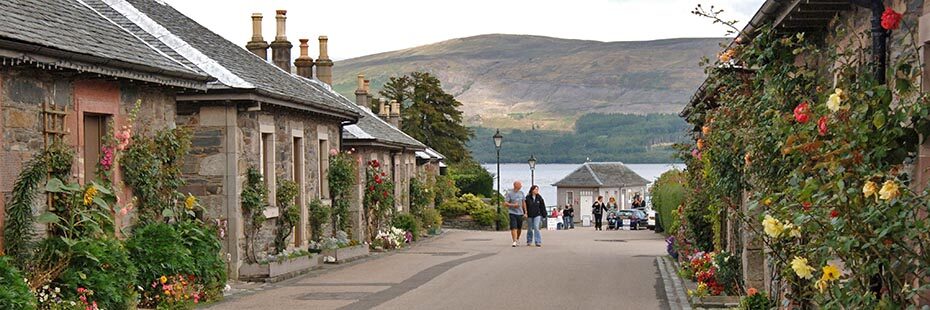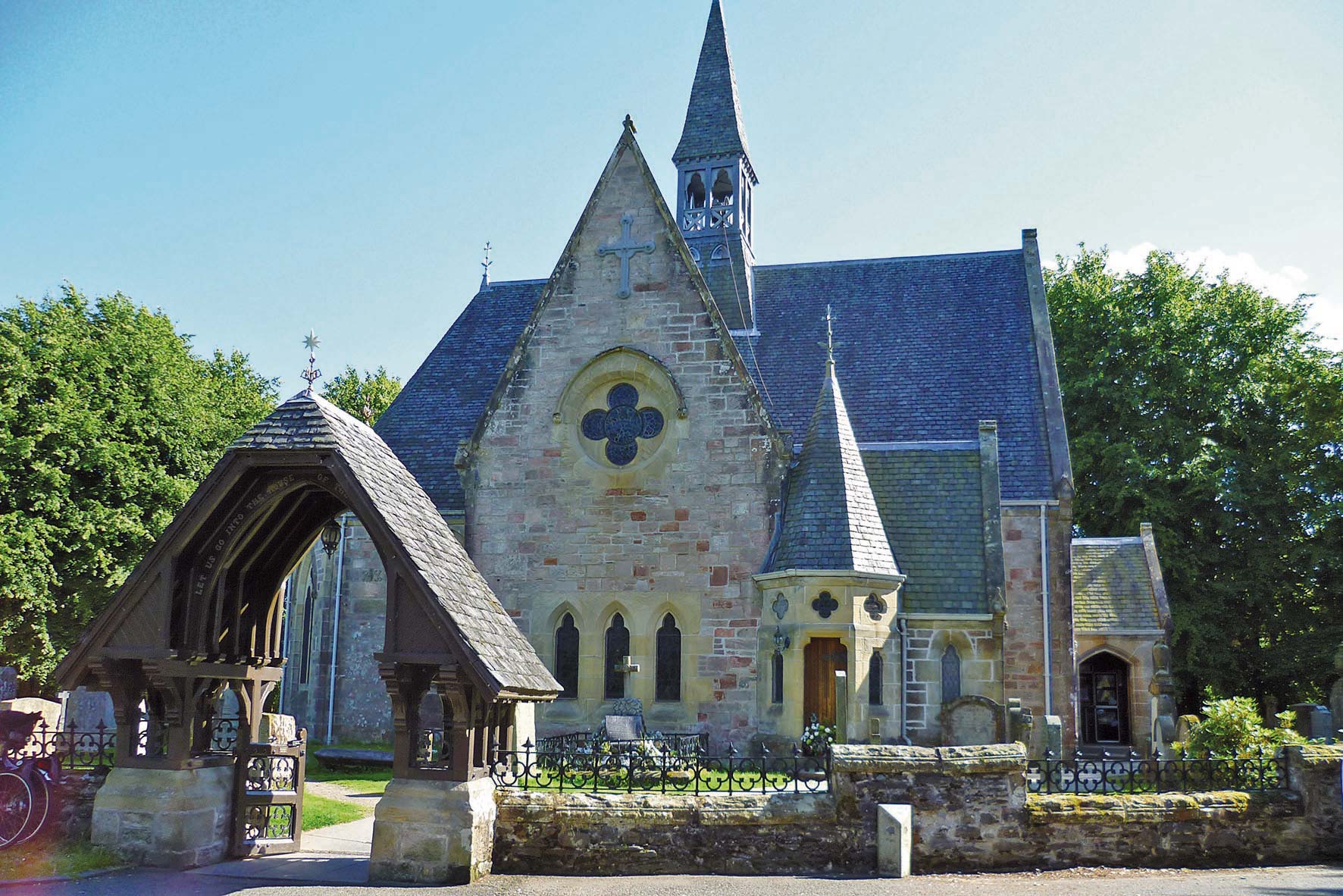
Luss Village Paths
Please be aware, maintenance and improvement works are underway at Luss Pier. As such, the Pier will be closed (except to emergency services) until Monday 11th April.
Grading: easy.
Luss Village Paths explore this conservation village, with its pretty streets bedecked with flowers, long beach and ancient graveyard. They range from a level 15-minute stroll through the village to a 1-hour walk through the village and surrounding countryside.
At a glance
- Grading: easy
- Distance: various, with the longest approx. 2 miles (3.5km)
- Path type: pavements and firm-surfaced paths
- Allow 1/4 to 1 hour

Pier Road in Luss
Lochside Path (15 minutes) explores the village and the lochside by the pier, which has welcomed cruise boats since 1850.
River Path (30 minutes) follows the banks of Luss Water past the meadows where sheep graze.
Quarry Path (30 minutes) strikes a line up into the hills, where Luss water tumbles by one of the old mills and the quarry where men cleaved the rock to roof the tenement houses of 19th century Glasgow.
Luss Heritage Path (1 hour) brings all the walks together to form a full circuit of the village, the river and the surrounding countryside. It offers some stunning views as well as a good walk. Afterwards, reward yourself with a drink and something to eat in one of the cafés or hotels.
Through the Glen If you want a longer walk, follow the Luss Glen road up to the hills. Leave your car in the village and follow the Quarry Path in an anti-clockwise direction to the foot of the glen, using the footbridge to cross the A82 behind the school. Then follow the road up into the glen.
Luss Glebe Loop Where the Lochside, Riverside and Heritage Paths meet behind Luss Church turn left onto a bridge for a short loop around Luss Glebe’s meadows, oakwoods and loch shore.

Luss Church
Interesting facts
- Around 1,500 years ago an Irish missionary, St. Kessog, arrived here bringing Christianity to the shores of Loch Lomond. He settled on the nearby island of Inchtavannach. At that time Luss was known as Clachan Dhu – the dark village – because it lay in the shadow of the surrounding hills. The saint was martyred and his body embalmed in sweet herbs. Legend has it that the herbs grew and covered his grave, giving rise to a new name for the village from the Gaelic word ‘lus’, meaning herb.
- The present church was built in 1875, but the graveyard is much older. The earliest stones date from the 7th or 8th century. Look out for the 11th century Viking hogback grave.
- In 1747, blackface sheep were introduced to Glen Luss and it was noted how well they did. Soon landlords all across the Highlands were evicting their tenants to make way for sheep in one of Scotland’s most heartrending stories – The Clearances. Look out for the Tupp Bridge which bears a sculpted sheep’s head and the inscription ‘Wm Johns Built this Bridge 1777’.
- Luss folk, like others in the Highlands, belonged to the extended family of the clan. By the late 18th century the chief had become the laird and many villagers worked for him. There were several mills here including a corn-mill, a sawmill and even a cotton-mill. Around 1850, the laird cleared their old, turf-thatched cottages and built a new model village for his workers.
- Once woodlands like these in Luss covered most of Scotland, but now they cover only a small area. The oak woodlands are very old and go most of the way around the loch. Villagers used to cut the trees in a 24-year rotation known as coppicing. The trees were cut and a single shoot was allowed to regrow. Their bark provided tannin, which softened leather used in machine belts.
- Luss has a long sandy beach which is ideal for picnics and paddling. The water quality is tested regularly during the bathing season as part of the EU Bathing Waters directive. But be warned – the water is cold all year round!
Download map
This information was produced with the cooperation of numerous organisations and individuals. We would like to thank everyone for their help including: The Clan Colquhoun Museum, Luss Estates, Scottish Natural Heritage, Scottish Enterprise and Landart.

